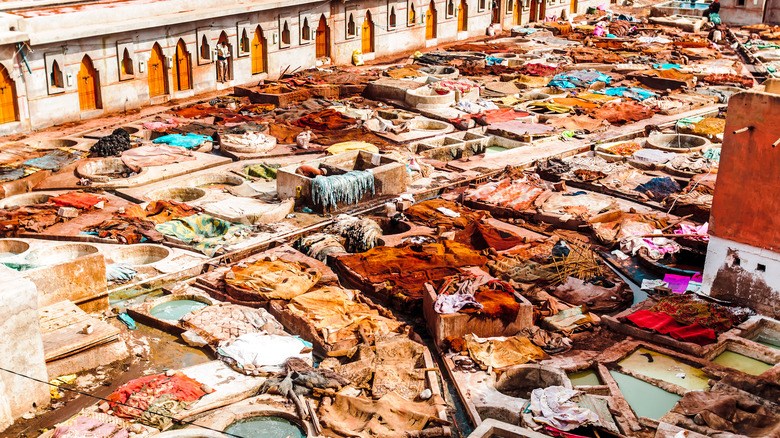Marrakech is full of historical sites
Designated as a UNESCO World Heritage in 1985, the 11th Century Medina contains some of Marrakech’s most precious sites, such as the landmark minaret of the Koutoubia Mosque. The 77-meter tower survived the earthquake that struck the city in September 2023 but many of the medina’s old buildings were not so lucky, including sections of the ancient walls that sustained damage. The city, however, is now safe again for visitors. The thick ramparts, studded with ornate gates leading into the medina, make for a good walking or jogging tour around the outskirts of the Old Town.
Koutoubia Mosque is an important symbol of the city and one of the most beautiful places of worship in Morocco. It is free to enter, but visitors should take care to dress appropriately and not disturb people while they are praying. Also within the Medina walls are the Bahia Palace and El Badi Palace. The first has an ornately decorated exterior while El Badi is an enormous ruined complex with plenty to explore. The 14th Century Ben Youssef Madrasa school is an important example of Islamic architecture while close by El Badi you will find the Saadian Tombs, an opulent mausoleum resplendent in colored tiles and intricate carvings.
For a slice of Marrakech tradition that goes back centuries, visit the open-air tanneries where leatherworkers still use age-old techniques. Beware, however, as the process is notoriously smelly, involving soaking the skins in a mixture that includes bird droppings.
Explore the living history of Marrakech

While there are plenty of historical attractions to seek out in Marrakech, a huge part of the medina’s appeal is the sense that you are walking through the city’s living history. While you’re exploring the souks and flea markets you will get a chance to engage in another time-honored tradition: haggling. It’s a part of day-to-day life for Moroccans and can feel like a bit of a combat sport to the uninitiated — but if you hold firm, you might land yourself a bargain.
The feeling that the old town is an open-air cultural museum is most keenly felt in Jemaa el-Fnaa, the city’s world-famous market square and meeting place. The square dates back to the 11th Century when it was a venue for public executions, hence its name “Assembly of the Dead.” Nowadays it is more convivial, a place of great cultural importance and the city’s top tourist attraction. It is where visitors flock to experience snake charmers, dancers, musicians, have their fortune told, or get a henna tattoo.
Jemaa el-Fnaa is also the first port of call for many when they want to sample traditional Moroccan cuisine. In the evening, hundreds of outdoor restaurants and food stalls are set up in the square, creating a heady atmosphere rich with succulent smells. Many delicacies are on offer including kebabs, tajines, fresh fish, and a variety of street food snacks. If you’re feeling brave, you can even try some freshly cooked sheep’s brains.

